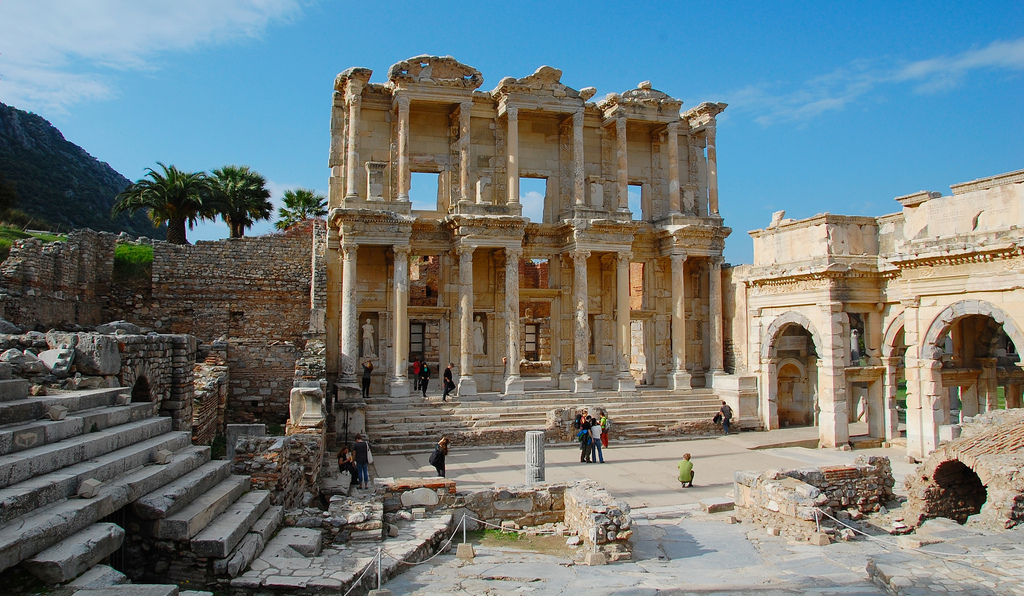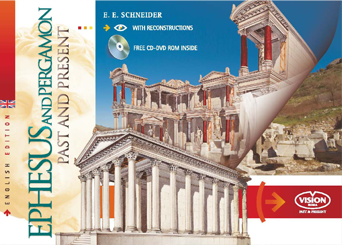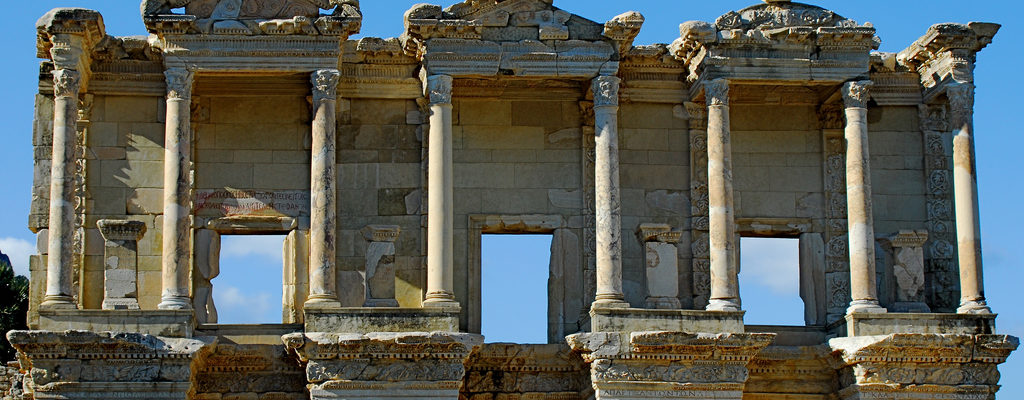Situated in the center of the city, in the area immediately adjacent to the agora, the Library was ordered built by T. Julius Aquila, consul in 110 A.D., in honor of his father Celsus Polemeanus, a consul in the year 92 A.D. and proconsul of Asia. Celsus himself was buried in a garland sarcophagus situated in a burial chamber created underneath the building’s basement, which thus also served as a Heroon, a truly unique feature in the classical world, which normally shunned burials in urban areas. Only in exceptional cases was it permitted for particularly meritorious citizens to be buried inside public buildings.
In addition to the library, Julius Aquila also left a bequest of 25,000 denarii, of which 8% was to be used both for the purchase of books and for the coronation of the statues and the sacred ceremonies connected with the cult of the dead.
The library, one of the best preserved of the ancient world, was completed in around 125 A.D.
It consists of a vast room (16.72 x 10.92 meters) with a large apse on the back wall, which probably held the statue of the goddess Athena.
Along the walls of the room are ten niches, framed by columns, which held the shelves for the scrolls; the niches were arranged on three levels, with the upper levels accessible by means of small balconies, while a hollow space between the internal and external walls served to insulate and protect the collection from moisture and permit a double passageway to the balconies of the upper levels and to the burial chamber of Celsus below. The ceiling of the room was flat and coffered.

© Photo credits by LWYang under CC-BY-2.0
Externally, the library was preceded by a large staircase, and the façade was decorated with a double row of columns framing niches decorated with marble cornices and used to hold statues of Sophia, Arete, Eunoia, and Episteme (i.e. representing the virtues of Celsus: wisdom, courage, benevolence, and knowledge) – and those of Celsus’s family.
The three doors of the ground floor were aligned with the three windows of the upper level.
The columns, more than a meter away from the façade, almost create a covered portico and give movement and spectacularity to the architecture of the library façade. The architectural decoration is also extremely varied and rich, in particular in the use of acanthus spirals with animated figures inside.
During the late Roman Age, the library’s functions were terminated; on the outside steps were placed, around a central niche, a series of slabs carved with bas-reliefs, coming from the so called Parthian Monument (erected at Ephesus in honor of emperor Lucius Verus perhaps to commemorate the Roman victory over the eastern population of Parthians), for the purpose of creating the basin of a nymphaeum for which the library façade itself provided the backdrop for the monumental fountain.

Do you want to know more about the history of Ephesus and Pergamon?
Check out our guidebook to Ephesus and Pergamon, with detailed history and Past & Present images of their greatest historical and archaeological sites.

